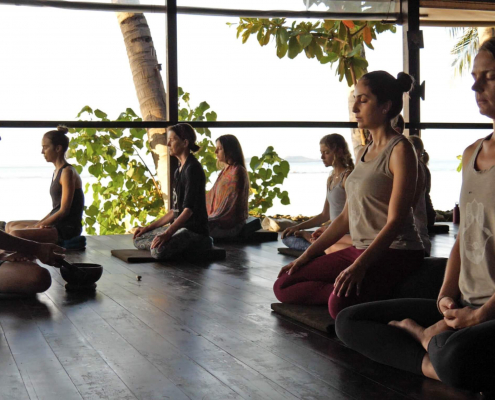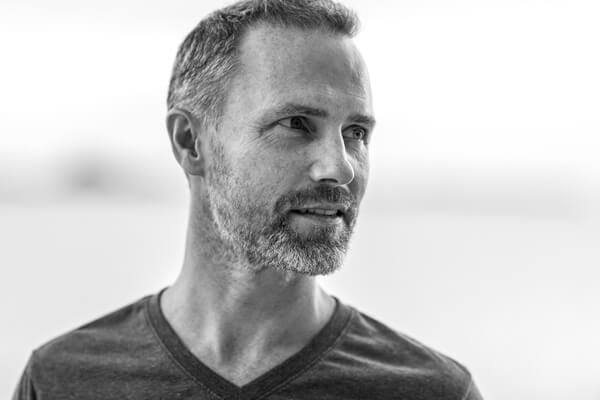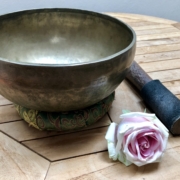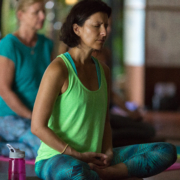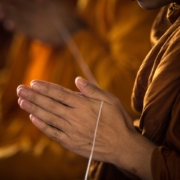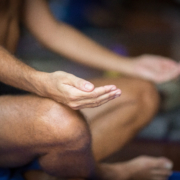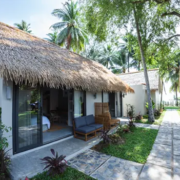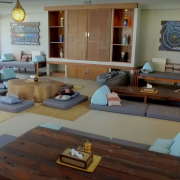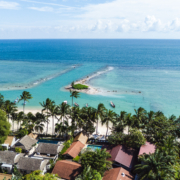 https://samahitaretreat.com/wp-content/uploads/2024/03/DJI_20231220135922_0003_D-scaled.jpg
1920
2560
Kirsten Mia
http://samahitaretreat.com/wp-content/uploads/2024/01/samahita-logo-v2.svg
Kirsten Mia2024-03-20 15:30:592024-03-20 15:30:59Travel, explore, be curious!
https://samahitaretreat.com/wp-content/uploads/2024/03/DJI_20231220135922_0003_D-scaled.jpg
1920
2560
Kirsten Mia
http://samahitaretreat.com/wp-content/uploads/2024/01/samahita-logo-v2.svg
Kirsten Mia2024-03-20 15:30:592024-03-20 15:30:59Travel, explore, be curious!Yogic Behavioral Support via Body, Breath and Mind
PART THREE: Yogic Behavioral Support via Body, Breath and Mind
Yoga, Breath and COVID-19: lifestyle behavioral support mechanisms
Approaches to manage the physical and psychological burden of stress from living through and after the current global pandemic
A. Specific Yogic Behavioral Support Mechanisms: Prevention and Promotion
Yoga practice techniques that mainly originate from the Hatha yoga tradition over the last 1,000 years possess on the physical side a triple combination of health maintenance, disease prevention, and chronic illness management and cure, as well as being meditational techniques when done with the correct focus. These practices were closely correlated with the ancient Indian medical approach of Ayurveda whereby disease and cure were expressed in Ayurvedic terminology and subsequently Hatha yoga practices of bodily conditioning, cleansing techniques or breath regulation were prescribed as part of the healthcare solution. Since 1920, starting with the first scientific experimental research on elements of yoga by Swami Kuvalayananda, this small but valuable part of comprehensive yoga that offers physical activity and therapeutic methods was framed in the light of modern anatomy and physiology essentially ushering in what is now a century of modern yogic therapy, fully documented in his classic 1961 manuscript Yoga Therapy. From this and subsequent work done over the decades it is clear that yoga techniques offer little relief in terms of acute issues and express their full benefit in physiological and psychological support through lifestyle attitudes and behavioral mechanisms especially in terms of chronic disease but also in terms of prevention and the promotion of optimal health. Though some yoga aficionados would argue for the power of mind developed by practice to withstand acute reactions and pain this is attitudinal and does not remove the initial cause of the acute response, namely the contraction of the virus in this instance.
A recent report from the WHO calls for the adaptation of the COVID-19 response to encompass prevention and management of Non-Communicable Disease (NCD) risks given the increased vulnerability in this time to those suffering such morbidities (1). A comprehensive yoga approach’s value in terms of prevention and support as we continue with the reality of COVID-19 disease and the potential exacerbation of NCDs with a threatening comorbidity situation, is to help upregulate the immune system, strengthen the respiratory apparatus, and increase psychological and emotional resilience (2). This is encouraging given evidence that a robust immune response to COVID-19 does occur across different cell types, especially in those considered healthy. Of those infected the majority survive but experience differing severity of symptoms. Kedzierska et al. report, this robust response leads to clinical recovery in patients considered at a non-severe level of COVID-19 (3).
” The regulation of inhalation and exhalation whereby the exhale is drawn longer leading to fewer breaths per minute strengthens vagal tone which directs each heartbeat by stimulating the parasympathetic arm of the autonomic nervous system. “
- Body support to breath and mind Both internationally and in the US physical body-based yoga classes are primarily attended by females where the majority of classes are medium to light intensity, require greater endurance than some other sporting activities, involve levels of complex body coordination, and in some cases employ attention on the breath. From 2012 to 2017 the percentage of US adults using yoga as a complementary health approach rose from 9.5% to 14.2% with women (19.8%) being twice as likely to attend yoga classes than men (8.6%) (4). These features of medium intensity, endurance, and body complexity are identified by Ludyga et al. in a recent meta-analysis as the magic zone where the cognitive mental fitness benefits pay off and may be what appeals more to women than men in the choice of activity (5). According to their analysis there are intensity differences for men and women, whereby males tend towards higher intensity, with a definite effect of complex coordination in activity. According to a comprehensive yoga-based practice approach Hatha yoga bodily postures develop strength and endurance and open up the body’s complexity to harmonize autonomic functioning over the different bodily systems (6), especially in terms of the functioning of the respiratory apparatus by increased lung capacity through a stronger and more effectively used respiratory diaphragm and intercostal muscles.Read: What is Breathwork
- Regular breathing exercises can enhance emotional resilienceThe capacity to adapt in different stressful situations without succumbing to negative mood and affect would be considered emotionally resilient. To do so requires an agile autonomic nervous system (ANS) at its base. Controlled breathing exercises directly affect autonomic functioning by typically shifting to parasympathetic dominance seen as an improved cardiac-vagal tone (7). This is sometimes translated as an acute piece of advice to take a breath to help calm down. However, resilience is cultivated over time and needs regularity in controlled yet simple breathing exercises. The regulation of inhalation and exhalation whereby the exhale is drawn longer leading to fewer breaths per minute strengthens vagal tone which directs each heartbeat by stimulating the parasympathetic arm of the autonomic nervous system.
” Training the capacity to be in-the-moment while engaged in breath practice coupled with daily behavioral tasks to plan the day, handle work, set up meetings, or arrange the kids’ meals can potentially become key elements of a proactive coping strategy as opposed to merely aspects that make up and add to the daily stress burden. “
- Breathing exercises are mindful in-the-moment meditative practicesThe requirement to sit, devote the time, focus on the specific regulation of inhalation and exhalation is an in-the-moment state of being. Mindfulness in practice is an essential ingredient of any comprehensive yoga approach that involves dedicated breathing exercises. The caveat of mechanical practice once familiarity of the exercises is reached warns of a loss of these benefits as a physical action would then continue with a disconnected mental state. A recent study found that a form of proactive coping by balancing living in-the-moment with the ability to plan for the future led to improved daily stress handling without succumbing to negative moods (8). Training the capacity to be in-the-moment while engaged in breath practice coupled with daily behavioral tasks to plan the day, handle work, set up meetings, or arrange the kids’ meals can potentially become key elements of a proactive coping strategy as opposed to merely aspects that make up and add to the daily stress burden. Read What are Breathing Exercises
- The importance of supine relaxation with breath regulationAn integral and important element of a comprehensive yoga approach is frequent supine or prone relaxation time intervals. The term in Sanskrit and common in any body-based yoga class is savasana, literally meaning corpse pose. Simple in design yet difficult in proper execution, this supine relaxation method is described as an almost complete lack of movement, from both tension and restlessness, in the body with a still mind, in-the-moment with a minimal level of respiration (Breathwork and Savasana ). Yogic therapy pioneer, Swami Kuvalayananda, was the first to write about and detail savasana and breath regulation in 1926. Dr. Datey M.D, head of Cardiology at K.E.M. Hospital Bombay, and Dr. Vinekar of the Kaivalyadham, the chief researcher under Swami Kuvalayananda, published in 1969 what is most likely the first validated medical journal publication on savasana, detailed empirical results to show the positive effects of this level of relaxation on reducing hypertension. Savasana as supine relaxation with awareness is a constructive effort to allow the different bodily tissues to relax coupled with a continued concentration on the same relaxed bodily tissues. Breath regulation is added to this bodily relaxation through initial controlled inhalation and slightly longer exhalation to an eventual state of passive respiration involving focused awareness on this minimal function of breath. Relaxation with breath awareness as a meditative technique has been found to be more effective than relaxing music unaccompanied by meditation techniques in reducing anxiety (9).
- Prone breathing, an established yogic breathing preparation practiceA condition known as “happy hypoxia” by clinicians has been showing up with some COVID-19 positive patients (10). Carbon dioxide levels are unaffected and the lungs inflate but oxygen saturation levels, measured by a finger device, show as low as 70s, 60s or even 50s. Human respiratory physiology is designed to read rising or falling levels of carbon dioxide, which impels us to breathe in or out, but does not sense oxygen levels. Normal blood-oxygen saturations range between 95-98%. Other lung or respiratory tract diseases, such as pneumonia, exhibit diminishing saturation levels with poor functioning, often stiff, lungs that cannot expel carbon dioxide efficiently and thus leave the patient short of breath. A recent research report by NY hospital-based clinicians Caputo et al. showed early self-proning in awake COVID-19 positive patients demonstrated improved oxygen saturation (11). Prone breathing has been a staple yogic breathing preparation practice, as an acute yogic therapy recommended in cases of anxiety or panic attack, and now, based on this recent research, to offer a degree of acute support to COVID-19 infected patients. Caputo et al. report that they administered prone breathing to a 50 patient low oxygen saturation cohort and recorded significantly raised average saturation levels. It is also one of the most convincing and simplest breath techniques to expect compliance in. When done with arms folded and head straight a slight elevation to the ribs is caused. This allows for deeper diaphragmatic work that makes more complete use of lung capacity, thereby increasing ventilation and thus greater oxygen delivery. In acute COVID-19 cases it helps relieve reliance on electronic ventilators needed by more severe patients. From a comprehensive yoga approach done regularly it is a preventive and supportive measure over the long term on respiratory quality that is easy to do and continue. A prone breathing practice is described in this article Breathwork for Anxiety and Other Difficulties
Read the other parts of this article:
Yoga, Breath and COVID-19: lifestyle behavioral support mechanisms
Approaches to manage the physical and psychological burden of stress from living through and
after the current global pandemic
PART ONE: the initial facts
PART TWO: drugs, infrastructure, and yogic self-awareness
PART FOUR: the Power in Yoga’s Approach to Upgraded Breathing
Increase your understanding about the breath and explore the recommended practices
9 Benefits of Correct Breathing and Doing Breathing Exercises
Breathwork for Anxiety and Other Difficulties
Specific Guided Ratio controlled Breathing Exercises:
Bi-Ratio Breath Exercise
Tri-Ratio Breath Exercise
Quad-Ratio Breath Exercise
Dr. Paul Dallaghan’s expertise with breathwork, body and meditative practices comes from three sources: (1) three decades of daily dedicated practice and teaching these techniques; (2) uniquely acknowledged in the Yoga tradition by the title of “Master Yogi-Prānācharya (expert in breath)”, following an immersion in the original culture through one-on-one direct training in practice and study of ancient texts; (3) a PhD in doctoral scientific research at a leading US university (Emory) covering both the tradition and science of yoga and breath practices in terms of stress, health and aging. As a result, Paul occupies a unique space to impart genuine teaching and science on the breath, body, and meditative practices, seen as a Teacher-of-teachers and identified to carry on the tradition of Pranayama. His sincere and ongoing role is to teach, write and research, to help put out experienced and authentic information on these areas of how we live, breathe and be, to help people improve their mental and physical health, and live more fulfilling lives.
For more on his background see his bio
References
- WHO COVID-19 and NCDs
DOI: https://doi.org/10.1016/S0140-6736(20)31067-9 - Psychological Function, Iyengar Yoga, and Coherent Breathing: A Randomized Controlled Dosing Study
Scott et al.
Journal of Psychiatric Practice: November 2019 – Volume 25 – Issue 6 – p 437-450
doi: 10.1097/PRA.0000000000000435
https://journals.lww.com/practicalpsychiatry/Abstract/2019/11000/Psychological_Function,_Iyengar_Yoga,_and_Coherent.4.aspx - Irani Thevarajan, Thi H. O. Nguyen, Marios Koutsakos, Julian Druce, Leon Caly, Carolien E. van de Sandt, Xiaoxiao Jia, Suellen Nicholson, Mike Catton, Benjamin Cowie, Steven Y. C. Tong, Sharon R. Lewin, Katherine Kedzierska. Breadth of concomitant immune responses prior to patient recovery: a case report of non-severe COVID-19. Nature Medicine, 2020; DOI: 10.1038/s41591-020-0819-2
- BClarke et al., 2018, NCHS data brief Use of Yoga, Meditation, and Chiropractors Among U.S. Adults Aged 18 and Over
https://www.ncbi.nlm.nih.gov/pubmed/30475686 - BSebastian Ludyga, Markus Gerber, Uwe Pühse, Vera N. Looser, Keita Kamijo. Systematic review and meta-analysis investigating moderators of long-term effects of exercise on cognition in healthy individuals. Nature Human Behaviour, 2020; DOI: 10.1038/s41562-020-0851-8
https://www.nature.com/articles/s41562-020-0851-8 - Hathapradipika of Swatmarama
- Cardiac-vagal tone as seen in HRV and emotional resilience
Katahira, K., Fujimura, T., Matsuda, Y. T., Okanoya, K., & Okada, M. (2014). Individual differences in heart rate variability are associated with the avoidance of negative emotional events. Biol Psychol,
https://www.ncbi.nlm.nih.gov/pubmed/25457639 - Melody G. Polk, Emily L. Smith, Ling-Rui Zhang, Shevaun D. Neupert. Thinking ahead and staying in the present: Implications for reactivity to daily stressors. Personality and Individual Differences, 2020
https://www.sciencedirect.com/science/article/abs/pii/S0191886920301604 - Tan, F., Tengah, A., Nee, L. Y., & Fredericks, S. (2014). A study of the effect of relaxing music on heart rate recovery after exercise among healthy students. Complement Ther Clin Pract, 20(2), 114-117. doi:10.1016/j.ctcp.2014.01.001
https://www.ncbi.nlm.nih.gov/pubmed/24767956 - The mystery of the pandemic’s ‘happy hypoxia’ Couzin-Frankel, J. Science May 1, 2020 https://www.sciencemagazinedigital.org/sciencemagazine/01_may_2020/MobilePagedArticle.action?articleId=1582310&app=false#articleId1582310
- Caputo_2020_Early Self-Proning in Awake, Non-intubated Patients in the Emergency Department- A Single ED’s Experience During the COVID-19 Pandemic https://onlinelibrary.wiley.com/doi/full/10.1111/acem.13994
More from the Samahita Blog
